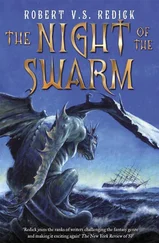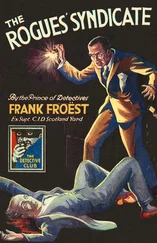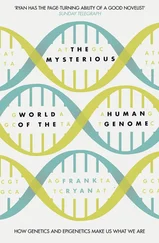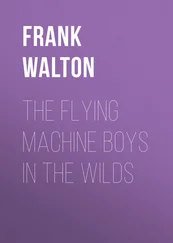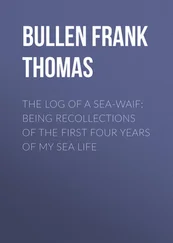Anawak nodded. In 1993 the San Ignacio lagoon had been named a UNES(X) World Heritage Site. It was the last undeveloped nursery and breeding ground in the world for the Pacific grey whale, and it was home to a multitude of endangered plant and animal species. But in spite of that the Mitsubishi Corporation was planning to build a salt-evaporation plant that would pump twenty thousand litres of salt water out of the lagoon per second, creating 116 square miles of salt ponds. The water would flow back as waste water. No one knew what effect it would have on the whales. Countless scientists, environmentalists and a host of Noble Prize winners were protesting against the proposal, which threatened to set a disastrous precedent.
'So you see,' continued Frank, 'that's the whales' world, as you know it. They live in this world and it's so much more than just a chain of conditions that are straightforwardly good or bad for their survival. Maybe the whales aren't the problem, Leon. They might be just part of the problem – the only part we can see.'
Aquarium, Vancouver
While Anawak was listening to the taayii Haw'ilh , John Ford was seeing double. For hours he'd been monitoring two screens at once. The URA's footage of Lucy and the pod of greys was on one screen while the other showed a 3-D grid of lines in which a dozen green pinpricks were suspended. As the pod changed location and formation, the pinpricks shifted, moving through the virtual space. Almost immediately after splashdown, the robot had matched Lucy's tail flukes to the sounds she was making, enabling it to use the noises to identify her and determine her position, which flashed green on the screen. Even if she had dived to the darkest depths, the robot wouldn't have lost her.
A stream of data flowed across the second screen from the tag still buried in Lucy's blubber: heart-rate, depth of dive, positional data, temperature, pressure and light. The combined information from the tag and the URA provided a comprehensive picture of what Lucy had been doing over twenty-four hours. Twenty-four hours in the life of a rampaging whale.
There was room in the observation lab for four people to monitor the output. Ford and two assistants were sitting in semi-darkness. The fourth work station was empty. A stomach bug had reduced the team to three, condemning them all to a night shift.
Ford reached to one side, keeping his eyes on the screens, and stuck his hand into a carton. A handful of congealed chips disappeared into his mouth.
Lucy didn't give the impression that she was rampaging.
Over the past few hours she'd been doing what benthic feeders did best – grazing, with half a dozen adult greys and two adolescents. At regular intervals she'd pushed her way through curtains of seaweed towards the bottom, raising clouds of sediment as she ploughed through sandy silt, catching worms and amphipods. Lying on her side, she'd tilled long furrows with her narrow bow-shaped head. In the beginning he'd been fascinated. It wasn't the first time he'd seen pictures of grey whales feeding, but the URA swam with the pod. Its footage was in a different league. He could even see much of the detail. Following a sperm whale to its feeding grounds would have meant sinking to the depths of the ocean, but grey whales loved the shallows. So for hours Ford had been watching an alternating picture of light and dusk. Lucy bobbed along the surface for a few minutes, filtered out the silt through her baleen, filled her lungs with air, then returned to the bottom. She came so close to the shore that most of the pictures had been taken at depths of less than thirty metres.
Ford watched as the scarred and mottled body slid over the sediment, swirling up the silt. 'The robot found it easy to follow the whales because they barely left the spot, swimming just a few metres in one direction, then a short distance in the other, shuttling back and forth, up and down, feeding, returning to the surface and plunging under water. Ford liked to compare Vancouver Island to a service station where whales hung out and snacked – which was what the pod was doing now.
Up to the surface, down to the sea floor, feeding, swimming.
After a while it got boring.
At one point a group of orcas appeared in the distance, but it didn't stick around. Most of the time, encounters like that passed without incident, although orcas were the only creatures apart from humans to prey on large whales. Not even blue whales were safe. When orcas went for the kill, it was a ferocious group attack. They took bites of their victim's lips and tongue, leaving behind a gigantic, mutilated corpse that sank slowly to the bottom.
Down to the sea floor, up to the surface, diving, feeding.
Lucy fell asleep. At least Ford assumed that she was sleeping. With his assistants he watched the picture darken, as daylight aimed to dusk. A shadow was visible against the black background: Lucy's body, suspended upright in the water, sinking slowly towards the bottom, then creeping up again. Several marine mammals rested in that way. Every few minutes they rose to the surface in their half-sleep, breathed and sank down, still slumbering. Remarkably, they never slept longer than five or six minutes at a time, yet the short naps added up to a rest.
Eventually the screens went black. Only the green lights betrayed the position of the pack.
It was night.
Nothing to see, still he had to watch – the tedium was hard to bear. Now and then something flashed across the screen; a jellyfish or a squid. Otherwise it was blacker than black. A stream of data continued to flow across the second monitor – details of Lucy's metabolism and her physical surroundings. The green lights moved lethargically through the virtual space. Not all of the animals in the pod would sleep at night. Whales slept irregularly, at different times of day or night. From the screen he could tell that Lucy and the other greys had stopped diving and feeding. From time to time the temperature changed by half a degree, depending on the depth. Everything else stayed constant. The grey whale's heart was beating steadily, sometimes speeding up a little, sometimes slowing down. The URA's hydrophone picked up all kinds of underwater noise: swooshing and bubbling, orca calls and the song of the humpbacks, bellowing and growling, the distant whir of a ship's propeller, but nothing out of the ordinary.
Ford sat in front of the pitch-black screen and yawned until his jaw clicked.
He gathered up the last few chips. His fingers stiffened. He squinted at the screen. Something was happening to the data.
From the moment the probe had started to record, it had registered a depth of between nought and thirty metres. Now it was registering forty, then fifty. Lucy was on the move. She was swimming towards the open sea and diving deeper all the time. The other whales followed rapidly. There was no hanging about now. This was migration speed.
What's the hurry? thought Ford.
Lucy's heartrate slowed. She was still diving, gliding rapidly downwards. Now her lungs would contain only ten per cent of the oxygen she was carrying, maybe less. The rest was stored in her blood and muscles.
Lucy was over a hundred metres below the surface. The blood supply to her non-vital body parts had already shut down. A tangled network of capillaries absorbed the diverted blood. Muscle movement and metabolism proceeded anaerobically. Over millions of years a series of astonishing changes had enabled the former land-dwellers to move effortlessly between the surface and the depths; to most fish, a change in pressure of just a hundred metres posed mortal danger. Lucy continued to sink, 150 metres, 200, moving steadily from the shore.
'Bill? Jackie?' Ford called. His eyes were fixed on the screen. 'Come and look at this.'
Читать дальше


